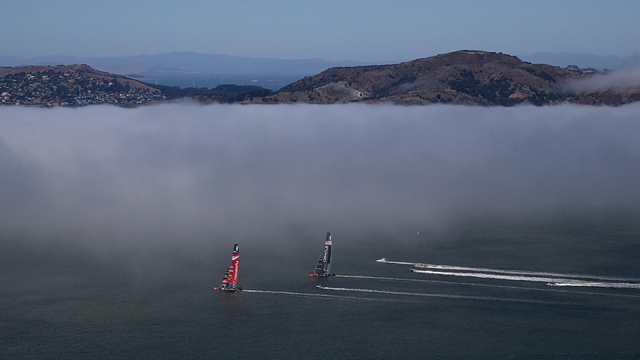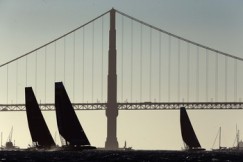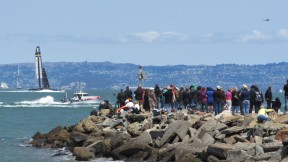
http://ww2.kqed.org/science/wp-content/uploads/sites/35/2013/09/Physics-of-Sailing.mp3
The America’s Cup sailboats are sleek and fast. The AC72, the type of catamaran used in this year’s race, can travel almost three times the speed of the prevailing wind. On June 18th Emirates Team New Zealand recorded a speed of 50.8 mph (44.1 knots), with a wind speed of about 18 mph (15.6 knots).
Wind is the only thing powering these boats, so how can they go faster than the wind blows?
It might seem like the sailboats are defying the laws of nature: that they’re getting something from nothing. Not so, according to Steve Collie, an aerodynamics engineer for Emirates Team New Zealand. “In physics we always talk about conservation of energy,” Collie said. “Sure, we can’t create energy. We can’t produce magic that way. But there’s no sort of parallel theorem of conservation of speed.”
In other words, sailboats are not actually creating their own energy (no, they’re not violating Newton’s second law). They’re harnessing more than one kind of wind, and they’re doing it like a jet harnesses the flow of air to fly.
Everyone has felt this second kind of wind. It’s what you feel when the air is still and you head off on a bike, or a skateboard. You build speed, and it doesn’t take long before there’s a wind on your face. This is called apparent wind.

True wind is what you feel when you’re standing still and the wind is blowing. The wind an object feels when it’s in motion is apparent wind. Sailboats utilize both true wind and apparent wind. One force pushes the sailboat, and the other force pulls, or drags it forward.

